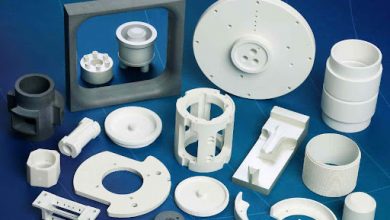Helios Cyber Secure Processor: Redefining Cybersecurity in Computing

In an age dominated by rapid digital transformation, cybersecurity has become a top priority for governments, corporations, and individuals. With increasing reliance on connected devices, cloud computing, and artificial intelligence, the threat landscape has evolved dramatically. To address these challenges, advanced solutions like the Helios Cyber Secure Processor are emerging, promising unparalleled security for sensitive digital operations. This article delves deep into the architecture, features, and potential impact of the Helios Cyber Secure Processor on the cybersecurity domain.
The Need for Cybersecure Processors
Traditional processors prioritize performance, energy efficiency, and scalability. However, their security features are often layered on top of existing designs, making them vulnerable to increasingly sophisticated cyberattacks. Threat actors now exploit hardware vulnerabilities, leveraging attacks like side-channel exploits, Rowhammer, and Spectre/Meltdown.
The consequences of these vulnerabilities can be dire. They range from data breaches and identity theft to critical infrastructure sabotage. To address such threats, processors need to be built with security as a core design principle, not an afterthought. Enter the Helios Cyber Secure Processor: a revolutionary architecture that seamlessly integrates advanced security mechanisms without compromising performance.
Overview of the Helios Cyber Secure Processor
The Helios Cyber Secure Processor is a cutting-edge chip designed with cybersecurity as its central focus. It combines state-of-the-art cryptographic modules, AI-driven threat detection, and real-time response capabilities to protect against a wide range of cyber threats. Developed by leading engineers in the field of secure computing, the processor is tailored for applications in defense, finance, healthcare, and other critical sectors.
Core Objectives:
- Hardware-Based Security: Implementing security at the hardware level to prevent common exploits that software alone cannot handle.
- Performance Optimization: Maintaining competitive performance metrics while integrating robust security measures.
- Flexibility and Scalability: Adapting to various workloads and environments, from edge computing to cloud infrastructure.
- Post-Quantum Resilience: Ensuring future-proof security in a world where quantum computing could potentially break current cryptographic standards.
Key Features of Helios Cyber Secure Processor
1. Built-In Cryptographic Engine
The Helios processor integrates a dedicated cryptographic engine, capable of performing complex encryption and decryption operations at lightning speed. This hardware-based module supports a variety of cryptographic standards, including AES, RSA, ECC, and post-quantum algorithms such as lattice-based cryptography. By offloading these operations to dedicated hardware, the processor ensures both efficiency and security.
2. Secure Boot and Firmware Validation
Helios employs a secure boot mechanism to validate firmware integrity at every startup. By using cryptographically signed firmware, it ensures that only trusted code is executed. This feature is critical in preventing malware from embedding itself in the boot process, a common vector for attacks.
3. Real-Time Threat Detection with AI
A standout feature of Helios is its AI-driven threat detection engine. This subsystem monitors processor activity, detecting anomalous behaviors that may indicate an ongoing attack, such as side-channel attempts or privilege escalation. The AI is trained using vast datasets of known attack patterns, allowing it to identify emerging threats proactively.
4. Physical Tamper Resistance
The processor is designed to detect and respond to physical tampering. Embedded sensors monitor for temperature changes, voltage fluctuations, and invasive probing attempts. If tampering is detected, the processor can wipe sensitive data or enter a secure shutdown mode.
5. Memory and Data Protection
Helios employs advanced memory encryption and isolation techniques. All data in transit and at rest is encrypted, ensuring that even if a breach occurs, the data remains unreadable. Furthermore, the processor enforces strict memory partitioning to prevent unauthorized access between applications.
6. Post-Quantum Security
As quantum computing advances, traditional cryptographic methods face the risk of obsolescence. Helios anticipates this challenge by incorporating post-quantum cryptographic standards. This makes it one of the first processors to be truly future-ready in the face of quantum threats.
7. On-Chip Trusted Execution Environment (TEE)
The Helios processor includes a TEE that isolates sensitive operations from the rest of the system. This secure enclave enables the execution of critical tasks, such as key management and digital signing, in a protected environment, immune to external interference.
Architecture of the Helios Cyber Secure Processor
The Helios processor’s architecture is a marvel of modern engineering. Its core is divided into multiple secure zones, each dedicated to a specific function:
- Secure Core: Executes sensitive operations, including cryptographic functions and secure computations.
- General Purpose Core: Handles routine processing tasks with performance comparable to leading commercial processors.
- Threat Detection Engine: Monitors system-wide activity for real-time anomaly detection.
- Memory Controller with Encryption: Ensures that all data leaving or entering memory is encrypted by default.
These components are interconnected through a secure bus that prevents unauthorized data interception or injection.
Applications of the Helios Cyber Secure Processor1. Defense and National Security
The Helios processor is ideal for military applications where secure communications and data protection are paramount. It can safeguard classified information, control encrypted communication channels, and provide tamper-proof operation in the field.
2. Financial Services
In banking and finance, the processor can secure transactions, protect customer data, and detect fraud in real-time. Its cryptographic engine ensures that sensitive operations, such as payment processing, are conducted safely.
3. Healthcare
The healthcare sector, with its growing reliance on IoT devices and electronic health records, stands to benefit from the Helios processor. By securing patient data and ensuring device integrity, it can mitigate the risks of cyberattacks on medical infrastructure.
4. Critical Infrastructure
From power grids to transportation networks, critical infrastructure systems face constant cyber threats. The Helios processor can fortify these systems, ensuring they remain operational and secure even during targeted attacks.
5. Cloud and Edge Computing
With its scalable design, Helios can be deployed in cloud data centers or at the edge, providing robust security for distributed systems. Its ability to detect and respond to threats in real-time makes it a valuable asset for these environments.
The Future of Cybersecurity with Helios
As the digital world grows increasingly interconnected, the importance of secure processors like Helios cannot be overstated. It represents a paradigm shift in how we approach cybersecurity, emphasizing proactive protection over reactive measures. By integrating advanced security features at the hardware level, Helios sets a new standard for processor design.
However, challenges remain. The integration of sophisticated security measures often raises concerns about cost, power consumption, and compatibility with existing systems. To ensure widespread adoption, Helios must address these concerns while continuing to innovate.
Conclusion
The Helios Cyber Secure Processor is more than just a technological advancement; it is a glimpse into the future of secure computing. With its emphasis on hardware-based security, real-time threat detection, and post-quantum resilience, Helios promises to be a cornerstone of cybersecurity in the digital age. As cyber threats continue to evolve, solutions like Helios are not just desirable—they are essential.





